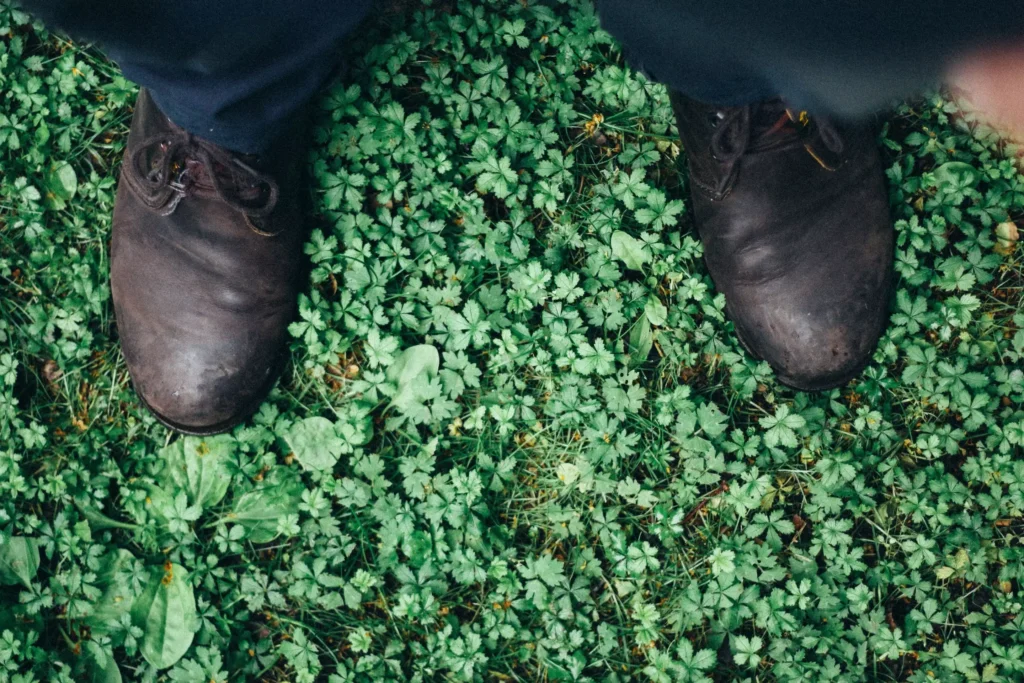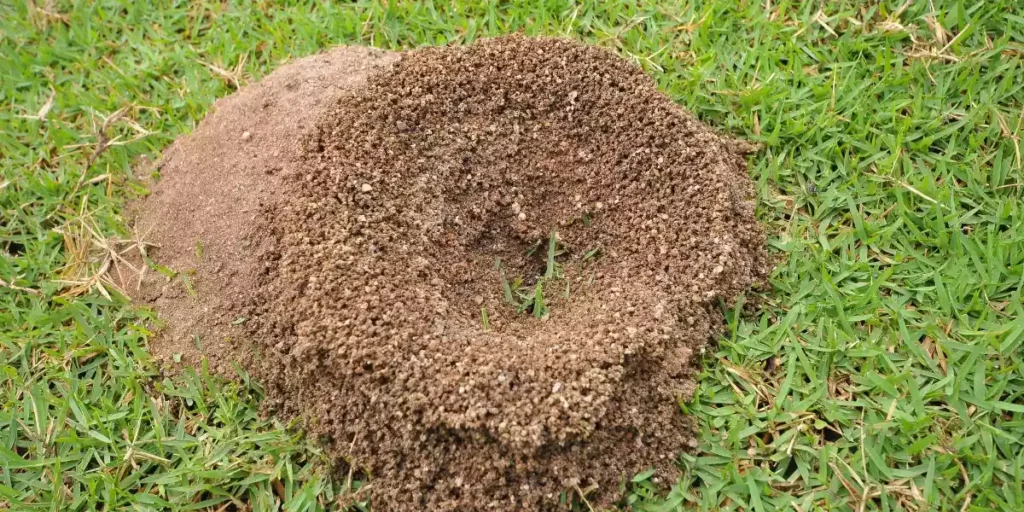Hey there, fellow green thumbs! Are you looking for a natural way to improve the health and vitality of your plants? Look no further than worm castings – a nutrient-rich, organic fertilizer that can benefit any plant in any stage of life.
And one of the easiest ways to use worm castings is as a top dressing, or by sprinkling them on the soil’s surface around your plants. But what exactly are worm castings, and how can they help your plants?
Well, worm castings are the waste material produced by earthworms as they digest organic matter. This superfood for plants contains a wide range of macro and micronutrients, as well as beneficial microorganisms that can improve soil fertility and plant health.
In this article, we’ll explore the benefits of worm castings, how to apply them as a top dressing, and other considerations for using them in your garden – so you can give your plants the best possible care.
Let’s get started!
How Do Worm Castings Help Your Plants?
If you want your plants to thrive like a fish in water, worm castings are the natural fertilizer you need to boost growth, enhance water retention, and fight off diseases.
These castings are packed with minerals essential for plant growth and are easily absorbed by plants, making them the perfect addition to any garden. They also stimulate plant growth more than any other natural product on the market, making them a superfood for your plants.
Worm castings can enhance soil’s water retention and inhibit root diseases, making them a must-have for any gardener. They also act as a barrier to help plants grow in soil with high or low pH levels, making it easier for them to absorb necessary nutrients.
With their ability to fight off plant diseases, worm castings are a natural and effective way to keep your plants healthy and thriving. Whether you have an indoor plant or a large garden, worm castings can benefit your plants in any stage of life, making them a worthwhile investment for any gardener.
Are Worm Castings Good For All Plants?
For any plant you want to enhance growth and fertility, worm castings are an unparalleled organic fertilizer and soil amendment that can provide a rich source of macro and micronutrients, beneficial microorganisms, and minerals essential for plant growth, making it a superfood for your plants.
However, it’s important to note that while worm castings are good for all plants, they shouldn’t be used at full strength as it may lead to scraggly plants with reduced aromatic oils.
The amount of worm castings to use may vary depending on the type of plant and its growth stage. For example, root crops may require 1-2 inches of worm castings at the bottom and sides of seed furrows and plant holes, while tomatoes, peppers, eggplants, beans, cucumbers, and melons may require a mixture of 1 part worm castings to 4 parts soil.
Roses, shrubs, and trees may require 4 cups of worm castings mixed into the surface of each plant and covered with mulch, while herb gardens may require feeding each plant 1/2 oz. of the mixture when seeds emerge or when transplanting.
By using worm castings as a top dressing, your plants will receive the necessary nutrients and microorganisms to thrive and grow.
Why Are Worm Castings Good For Plants?
Worm castings are good for plants because they provide a rich source of macro and micronutrients, minerals, and beneficial microorganisms. This makes them a superfood that can enhance growth and fertility. The nutrients found in worm castings are easily absorbed by plants, stimulating their growth more than any other natural product on the market.
Furthermore, worm castings enhance soil’s water retention and inhibit root diseases. They are packed with minerals essential for plant growth and can fight off plant diseases. In addition to the benefits mentioned above, worm castings can act as a barrier to help plants grow in soil with high/low pH levels, increase soil’s ability to retain water, reduce acid-forming carbon in soil, and increase nitrogen levels.
They can be applied to specific crops such as root crops, tomatoes, peppers, eggplants, beans, cucumbers, melons, roses, shrubs, and trees. However, it is important to note that worm castings cannot be used full strength to avoid scraggly plants with reduced aromatic oils.
Overall, worm castings are a fantastic organic fertilizer and soil amendment that can benefit plants in any stage of life.
Do Worm Castings Do Anything For The Soil?
Adding worm castings to soil can enhance soil fertility, water retention, and inhibit root diseases, making it a valuable addition to any gardening routine. But what exactly do worm castings do for the soil?
Here are four benefits of adding worm castings to soil:
- Worm castings contain concentrated nitrates, phosphorus, magnesium, potassium, calcium, manganese, copper, zinc, cobalt, borax, iron, carbon, and nitrogen, providing essential minerals for plant growth.
- They act as a barrier to help plants grow in soil with high or low pH levels.
- Worm castings increase the soil’s ability to retain water, reducing the need for frequent watering.
- They contain more than 50% more humus than what is normally found in topsoil, improving the soil’s overall health.
By incorporating worm castings into your gardening routine, you can improve the health of your plants and soil while reducing the need for additional fertilizers and water.
Do I Need To Fertilize If I Use Worm Castings?
You don’t need to fertilize separately when using worm castings to improve your soil’s health and fertility. Worm castings contain macro and micronutrients, minerals, and beneficial microorganisms that stimulate plant growth more than any other natural product on the market. These nutrients are easily absorbed by plants, enhancing soil’s water retention and inhibiting root diseases.
Additionally, worm castings are packed with minerals essential for plant growth, and can fight off plant diseases. They act as a barrier to help plants grow in soil with high/low pH levels, increase soil’s ability to retain water, and reduce acid-forming carbon in soil while increasing nitrogen levels.
Using worm castings as a top dressing for any plant, from indoor plants to lawns, can provide nutrient release that lasts up to two months. It’s also beneficial for plants in any stage of life.
Applying worm castings to specific crops, like root crops or tomatoes, peppers, eggplants, beans, cucumbers, and melons, can be done by mixing 1 part worm castings with 4 parts soil. Roses, shrubs, and trees benefit from adding 4 cups of worm castings into the surface of each plant and covering it with mulch. Worm castings are a great fertilizer for new lawns, seed, and sod.
The best part is that using worm castings is an apartment-friendly composting option, making it easy for anyone to improve their soil’s health and fertility.
Are Worm Castings Better Than Compost?
Using worm castings as a soil amendment provides numerous benefits, but how do they compare to compost?
While both worm castings and compost are organic fertilizers, worm castings are richer in nutrients and microorganisms. They’re also easier for plants to absorb, making them a more efficient option for increasing soil fertility. Additionally, worm castings have been shown to inhibit root diseases and act as a barrier to help plants grow in soil with high or low pH levels.
On the other hand, compost is a great option for adding organic matter to soil and improving its structure. It also provides a diverse range of nutrients and microorganisms that can benefit plant growth and health. However, the nutrient content of compost can vary depending on the materials used to make it, and it may take longer for plants to absorb its nutrients compared to worm castings.
Ultimately, both worm castings and compost have their advantages, and using them together can provide even greater benefits for your plants and soil.
How often do you top dress with worm castings?
Don’t miss out on the benefits of regularly incorporating worm castings into your soil’s surface, as it’s an easy and effective way to nourish your plants and improve soil fertility. Here are some important points to consider when deciding how often to top dress with worm castings:
- It is recommended to top dress with worm castings every month, as the nutrient release lasts up to two months.
- For lawns, top dressing should be done in spring or fall. Using a compost spreader or hands to broadcast the worm castings all over the lawn, then sweeping with a stiff-bristled broom helps them penetrate deeper into the soil.
- Excess worm castings can be added without harming plant or soil health, making it a flexible option for those who want to use more or less as needed.
- Using worm castings as a top dressing is the easiest way to use them, involving sprinkling on the soil’s surface around a plant and watering it.
- Top dressing with worm castings is better than traditional mix for improving soil fertility, making it a great option for plants in any stage of life.
By regularly incorporating worm castings into your soil’s surface, you can ensure that your plants are getting the nutrients they need to thrive. Whether you use it every month or as needed, top dressing with worm castings is a simple and effective way to improve soil fertility and promote healthy plant growth. Don’t hesitate to give it a try and see the difference it can make in your garden.
Conclusion
In conclusion, using worm castings as a top dressing is a simple and effective way to improve the health and growth of your plants. These nutrient-rich castings contain a plethora of macro and micronutrients, as well as beneficial microorganisms that can enhance soil fertility and promote healthy plant growth.
Did you know that some studies have shown that plants grown with worm castings can have higher yields and better resistance to pests and diseases? This is because worm castings contain a variety of compounds that can boost plant growth and immune systems.
For example, one study found that tomato plants grown with worm castings had a 30% increase in yield compared to those grown without them.
Overall, incorporating worm castings into your gardening routine can be a game-changer for your plants. By providing a natural source of nutrients and beneficial microorganisms, you can promote healthy growth and improve soil fertility without relying on synthetic fertilizers. Give it a try and see the difference for yourself!




